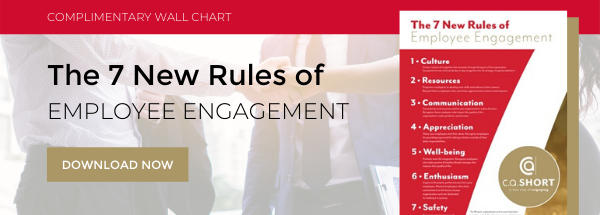 Attracting and retaining top talent can be a knock down, drag out fight for some industries. Depending on how large the pool of viable talent is for a given position, it’s a situation that could leave some companies in the dust.
Attracting and retaining top talent can be a knock down, drag out fight for some industries. Depending on how large the pool of viable talent is for a given position, it’s a situation that could leave some companies in the dust.
That’s why we’ve seen such a rise in what people refer to as office “perks.” From pinball machines and coffee bars to catered lunches and basketball courts, businesses are trying everything they can to show prospective employees that they have the most to offer. But, the question remains, “How much do these things really say about a company?”
As an Engagement Substitute
While there’s nothing inherently wrong with offering a fun, inviting and mentally stimulating atmosphere for employees, it should never be seen as a substitute for active employee engagement. One only offers short bursts of enjoyment, while the other can provide long-term satisfaction. Perks will look good on the surface and when first touring a potential workplace, but at the end of the day, if you cannot offer more meaningful benefits, those once shiny perks will begin to look a little dull.
As Payscale.com mentioned in their May 15, 2014 blog post, “Time and time again, we see that the most important factors for satisfied employees are compensation, recognition, a positive relationship with their supervisors and autonomy to do their jobs.” As you can see, there’s a clear absence of spas, weight rooms, video game consoles and beer taps.
Uncomplementing Company Goals
Furthermore, a mistake many companies often make is they do not seek out any correlation between the goals of the company and the perks being offered. For instance, if your company strives to build a connected, forward-thinking team-based environment within the organization, then team-based perks such as foosball tables or breakaway locations would make sense, because they reinforce that goal. Or, if your business maintains a focus on the health of employees, then gym memberships, healthcare incentives and healthful food choices would—again—make sense for that goal.
Simply put; a good perk reinforces the goals of the organization and not the other way around. If there is no foresight behind their existence nor a system in place to work in unison with them, they cannot exist as anything more than a superficial attempt to win over potential employees and their overall influence will remain finite. Perks make people feel good, but engagement makes people feel valued.
Invest for the Long-Term
Eventually, employees will grow bored of playing the same games or experiencing the same things day-in and day-out. But an investment in ensuring your employees are getting the most from their positions or providing the tools they need to grow and adapt is invaluable at any stage in someone’s career. So, rather than simply focusing on décor and physical benefits, it might do your organization well to consider more intangible things such as group experiences, leadership councils or increased community involvement. It all depends on what best serves the goals of the organization.
Carefully thought out perks can and do play a role in increasing engagement on certain levels; but they cannot do it alone nor satisfy all Four Stages of Employee Engagement. Organizations must focus on complete engagement that satisfies all of their employees’ needs rather than a select few.
At C. A. Short Company, we are your partner for increased employee engagement resulting in increased performance outcomes to grow your bottom line. Our process and research-based platform helps you engage your team in order to increase your bottom line, motivate your staff to the benefit of the entire organization, and reward your people for the positive changes they make. To request a Complimentary Consultation, please click here.






.jpg)



SHARE